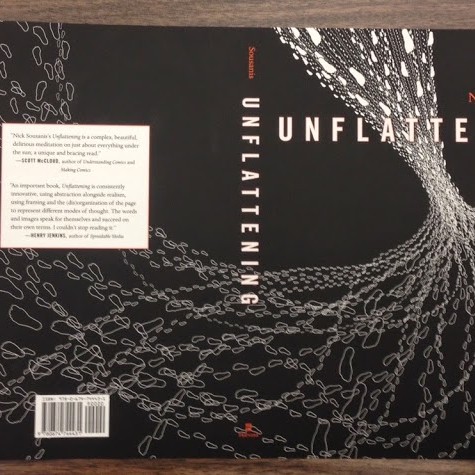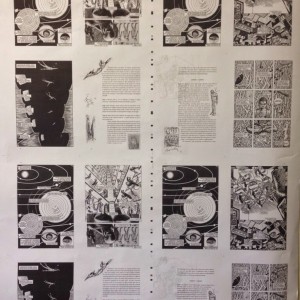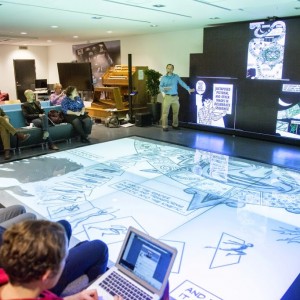Employing the multiplicity of meaning-making resources that the comics medium affords has greatly expanded the breadth and dimensionality of my (Nick’s) research processes. A brief look at the form: comics function as a kind of network (Groensteen, 2007), braiding together two distinct modes of awareness in a single form – linear, sequential text-like reading (McCloud, 1993) and simultaneous, all-over image-like viewing. These different reading approaches are inherent to the form, and this extends to the specific interaction of words and images, which is described as blended and interdependent (Harvey, 1979), where they exhibit a tension of approaching each other whilst still remaining apart (Hatfield, 2009). It is a multiplicative marriage in which each informs and enriches its partner to produce a resonance (Sousanis, 2012) that exceeds what either can do alone. ….
… the composing of a comics page can be seen as akin to drafting an architectural walkthrough, in the way that the author is greatly concerned with how the reader moves through the page — from tightly controlled sequencing to allowing for more non-linear flow. Rather than simply being a series of illustrations about ideas, I want the form itself to embody the ideas. The reader’s movements are inextricable from the experiencing of the ideas. I saw the opportunity to present on multiple screens simultaneously as resonant with how I make comics — with the added bonus being that here I could in a way stand in that space. … Decoupling from the standard powerpoint: slide, slide, slide… the multi-screen format mirrors the way in which a comic is significantly different than storyboarding, to which comics are frequently compared. In comics we are concerned with not just what is in each frame (panel), but the size, shape, and orientation of the panel, as well as its relationship to the others around it. This spatialization opens up possibilities for making unexpected connections — we bring together elements with different partners and forge new arrangements. HUMlab-X’s unique staging area let me play with the presentation in a similar manner. …




